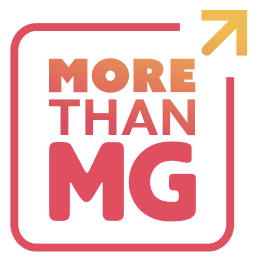Transcript
[ANTON] Okay. Aimee, talk to me about your morning routine. I want to know what’s important to you.
[AIMEE] Well, the first thing is how did I wake up in the morning. With MG, the way that it fluctuates with muscle weakness, I never know how much it’s going to affect my facial muscles. I get facial drooping where this part of my face is dragging, or my lip could pull down and it looks like I had a stroke. It could be really drastic, and my eyes too.
[AIMEE] Like my eyes, if you look, you can kind of see like one eye looks more like squinty or more closed than the other. They call it ptosis, but like eyelid drooping. It’s really common with MG. The thing is when you have this facial drooping happen it makes you super self-conscious, because we’re so used to having symmetry and thinking that that’s the idea of beauty. But I’m like, “Well, I have to adapt. Like I don’t know what the day is going to bring, and I love myself.” I’m like, “Okay. If I have to look like a Picasso painting, then so be it.” Like one eye here, but I can make that eye fabulous. Then this one over here is also fabulous, and we’re just going to deal with it because I feel like that inner confidence, that inner beauty, will shine forward. It does. You bring your energy to the space and your face meets you there. But we can still enhance, so there are things that I do to try to help make the ptosis less noticeable, the eyelid drooping in particular, so that kind of helps me.
[ANTON] I’m going to show you a couple little eyeshadow tips and tricks, but then I also want you to kind of duplicate it. Because you’re savvy and you’ve obviously taken the time to work with yourself and to accept yourself, and to still do it and be fabulous. I love that. Looking at you, I feel like on this side you have a little bit of a droop like that you were talking about.
[ANTON] Basically, what I’m seeing is your eyelid on this side is a little bit smaller than on this side. In balancing this out, I’m going to take kind of like a little bit of a darker sort of like very neutral brown, but it has a little bit of tone. It’s darker than your natural skin. I’m going to raise your crease. I’m going to place it high… like basically I’m starting by placing this on your, almost up to your brow bone, but I’m still leaving space under your brow.
[AIMEE] That’s the beauty of makeup and that’s what I love. In approaching MG, it’s like I mentioned a Picasso painting, and that works for me as far as accepting asymmetry is beautiful. But the idea with painting, and it’s the same thing for makeup, is that we can define things how we want, and raise things and lower things on another side to make it appear like it’s even, even if it’s not.
[AIMEE] Sweet. Okay. So this one for the crease. All right, let’s… hopefully that’s not too much.
[ANTON] You can always give it like a little…
[AIMEE] Now, am I going to do the crease lower or like…?
[ANTON] That’s an excellent question.
[AIMEE] Where should I put the line?
[ANTON] I honestly feel like this eye is probably like… this is like your normal balance, correct?
[AIMEE] Pretty much. Yeah.
[ANTON] I would literally put the crease where it needs to go. Because if you’re looking at this side, see how it’s higher? But essentially, if you flip that over here, it’s where your natural crease is, so I would place that…
[AIMEE] So, where would I begin? Like here-ish?
[ANTON] Yep. Yeah.
[AIMEE] All right.
[ANTON] Yeah.
[AIMEE] Then am I bringing it all the way… how far did you…?
[ANTON] I would say like three-quarters, something like that. But this is meant to just kind of… you can just really…
[ANTON] See, at this point, now you could kind of finish blending it out with just the tip of your finger. See how nice that kind of blends…?
[AIMEE] Beautiful. Yeah.
[ANTON] Even on that inside corner, you can kind of like smooth that inside corner out just with your fingertip a little bit. Yeah. That looks great. See, you got this like nice balance now. So there is a reason we do that dark color first. Because now, if you’ve made any mistakes, you could fix it with the lighter color. So you really want to take advantage of the shape here… and I know you love this brush. This is one of yours.
[AIMEE] It’s my favorite.
[ANTON] See, how maybe like… if you look in the mirror, see how like maybe that dark on your eyelid is like maybe displaced. Maybe that shouldn’t be there. You go right over it with that lighter color.
[AIMEE] Okay. Am I doing like the whole like…?
[ANTON] You’re going to do like the whole ball of your eye.
[ANTON] That looks so good. See, and that’s great because you want to take advantage of the shape and then get… yeah. See, any of that displaced dark that went too low, now you’ve covered it, so it’s great.
[AIMEE] And I feel like… Looking at myself, I really do feel like the way that you utilize the color on this side, like this eye is brought up more. The trick is, like with ptosis, to look at how far the eyelid is drooping. You look at a person’s pupil and see how far the lid comes over the pupil of the eye.
[ANTON] Oh, wow.

